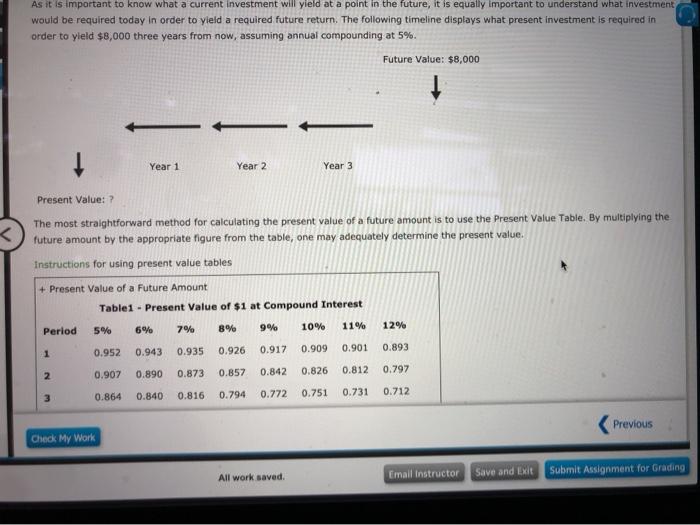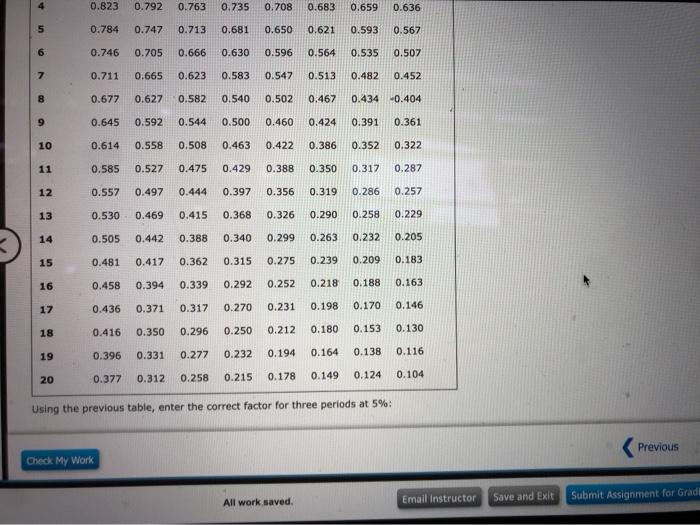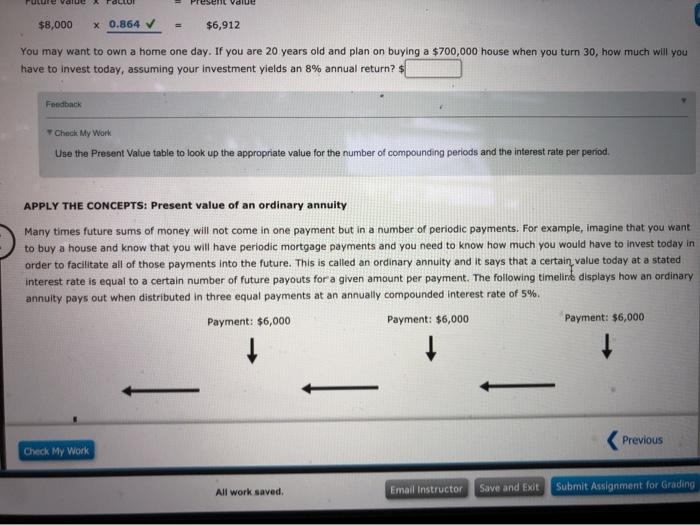Answered step by step
Verified Expert Solution
Question
1 Approved Answer
Ringer Co., a company that you regularly do business with, gives you a $18,000 note. The note is due in three years and pays




Ringer Co., a company that you regularly do business with, gives you a $18,000 note. The note is due in three years and pays simple interest of 5% annually. How much will Ringer pay you at the end of that term? Note: Enter the interest rate as a decimal. (I.e. 15% would be entered as .15) Principal + ( Principal Rate Time Total years Feedback Compound interest With compound interest, the interest is added to principal in the calculation of interest in future periods. This addition of interest to the principal is called compounding. This differs from simple interest, in which interest is computed based upon only the principal. The frequency with which interest is compounded per year will dictate how many interest computations are required (I.e. annually is once, semi-annually is twice, and quarterly is four times). Imagine that Ringer Co., fearing that you wouldn't take its deal, decides instead to offer you compound interest on the same $18,000 note. How much will Ringer pay you at the end of three years if interest is compounded annually at a rate of 5%? If required, round your answers to the nearest cent. As it is important to know what a current investment will yield at a point in the future, it is equally important to understand what investment would be required today in order to yield a required future return. The following timeline displays what present investment is required in order to yield $8,000 three years from now, assuming annual compounding at 5%. Future Value: $8,000 Year 1 Year 2 Year 3 Present Value: ? The most straightforward method for calculating the present value of a future amount is to use the Present Value Table. By multiplying the future amount by the appropriate figure from the table, one may adequately determine the present value. Instructions for using present value tables + Present Value of a Future Amount Table1 - Present Value of $1 at Compound Interest Period 5% 6% 7% 8% 9% 10% 11% 12% 0.943 0.935 0.926 0.917 0.909 0.901 0.893 0.952 0.890 0.873 0.857 0.842 0.826 0.812 0.797 0.907 0.864 0.840 0.816 0.794 0.772 0.751 0.731 0.712 3 Previous Check My Wor Save and Exit Submit Assignment for Grading Email Instructor All work saved. 0.823 0.792 0.763 0.735 0.708 0.683 0.659 0.636 5. 0.784 0.747 0.713 0.681 0.650 0.621 0.593 0.567 0.746 0.705 0.666 0.630 0.596 0.564 0.535 0.507 0.711 0.665 0.623 0.583 0.547 0.513 0.482 0.452 0.677 0.627 0.582 0.540 0.502 0.467 0.434 -0.404 6. 0.645 0.592 0.544 0.500 0.460 0.424 0.391 0.361 10 0.614 0.558 0.508 0.463 0.422 0.386 0.352 0.322 11 0.585 0.527 0.475 0.429 0.388 0.350 0.317 0.287 12 0.557 0.497 0.444 0.397 0.356 0.319 0.286 0.257 13 0.530 0.469 0.415 0.368 0.326 0.290 0.258 0.229 14 0.505 0.442 0.388 0.340 0.299 0.263 0.232 0.205 15 0.481 0.417 0.362 0.315 0.275 0.239 0.209 0.183 16 0.458 0.394 0.339 0.292 0.252 0.218 0.188 0.163 17 0.436 0.371 0.317 0.270 0.231 0.198 0.170 0.146 18 0.416 0.350 0.296 0.250 0.212 0.180 0.153 0.130 19 0.396 0.331 0.277 0.232 0.194 0.164 0.138 0.116 20 0.377 0.312 0.258 0.215 0.178 0.149 0.124 0.104 Using the previous table, enter the correct factor for three periods at 5%: Previous Check My Work Save and Exit Submit Assignment for Gradi Email Instructor All work saved. Future val ractor vaiue $8,000 x 0.864 V $6,912 You may want to own a home one day. If you are 20 years old and plan on buying a $700,000 house when you turn 30, how much will you have to invest today, assuming your investment yields an 8% annual return? $ Feedback Check My Work Use the Present Value table to look up the appropriate value for the number of compounding periods and the interest rate per period. APPLY THE CONCEPTS: Present value of an ordinary annuity Many times future sums of money will not come in one payment but in a number of periodic payments. For example, imagine that you want to buy a house and know that you will have periodic mortgage payments and you need to know how much you would have to invest today in order to facilitate all of those payments into the future. This is called an ordinary annuity and it says that a certain value today at a stated interest rate is equal to a certain number of future payouts for a given amount per payment. The following timeline displays how an ordinary annuity pays out when distributed in three equal payments at an annually compounded interest rate of 5%. Payment: $6,000 Payment: $6,000 Payment: $6,000 Previous Check My Work Email Instructor Save and Exit Submit Assignment for Grading All work saved.
Step by Step Solution
★★★★★
3.50 Rating (153 Votes )
There are 3 Steps involved in it
Step: 1

Get Instant Access to Expert-Tailored Solutions
See step-by-step solutions with expert insights and AI powered tools for academic success
Step: 2

Step: 3

Ace Your Homework with AI
Get the answers you need in no time with our AI-driven, step-by-step assistance
Get Started


